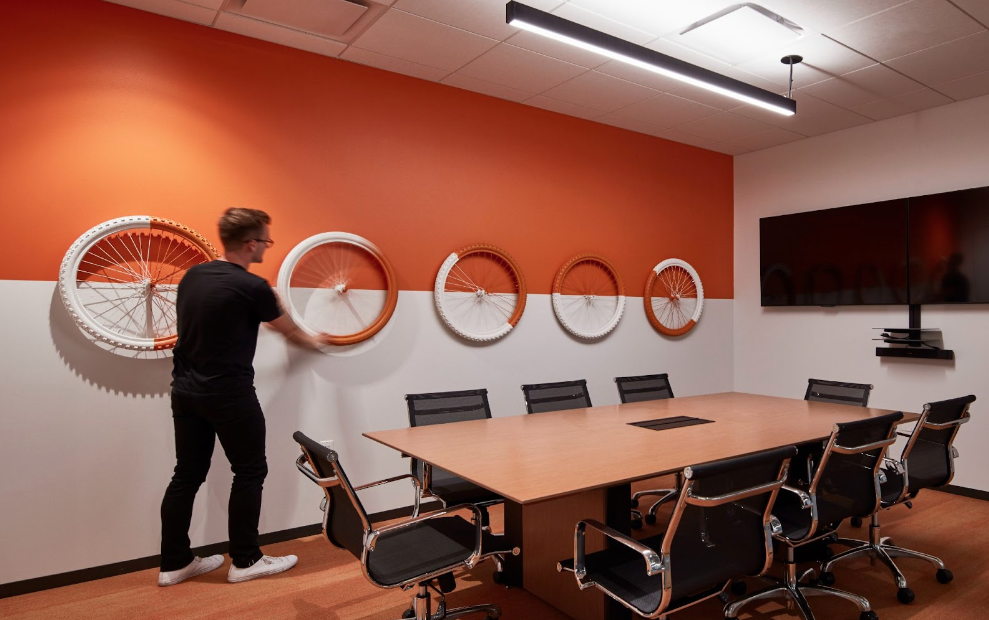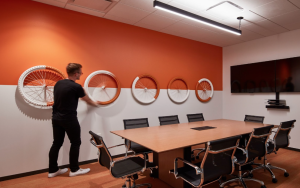
The Basics:
Immersive design is a buzzword we see popping up everywhere this year. But how does it interact with experiential design, and what are the key differences between the two?
Immersive design focuses on users being fully absorbed in an experience. Often, this involves the use of virtual reality, creating the illusion that the user is physically interacting with a realistic digital environment. It’s about crafting a world where the user is an active participant, engaging deeply with the digital space.
On the other hand, experiential design is centered on designing environments based on the total human experience. This approach typically includes elements that engage the senses or evoke emotions. It’s about creating spaces that make a lasting impact on the user’s feelings and perceptions. Typically traditional graphics are used in this type of design. There’s a lot that can be done to create movement – things like mixing textures, magnet walls, or mixing matte and gloss graphics.

Effective Design:
The most important consideration when designing a space is how your audience is going to be able to relate to it and how it reflects on your brand. For example if you’re on a budget but needing to refresh your lobby you’ll need to consider everyone who walks in your door – from your employees to customers and everyone in between. A large wall graphic might be your best option to maximize impact and budget. We’ve seen some clever subtle ways to incorporate branding into localized images as well as tell the story about the company. Graphics with cityscapes, 3D materials, company timelines, achievements, and interactive displays that encourage being shared on social media. One of our personal favorites is when a client comes to us looking for a floor graphic that is water in a pool or ocean. We loved this so much we have a beach floor in our corporate offices! Whatever you envision, always make sure that your audience has an immediate and lasting impression – make it memorable!
Think about adding digital signage that has a powerful CMS system simple enough to operate without the help of IT. This allows you to update your display to be timely and constantly relevant. Or a digital screen that moves based on the user’s movements. All of this sounds cool, but if you don’t have cohesion of branding colors and other elements on your walls your company’s brand could be getting lost in the messaging. Our thoughts are to add both and let them work together.
Which leads us to our next point….why not merge the two design styles?
Merging Immersive & Experiential Designs:
We’ve seen customers combine these two styles to create the ultimate memorable experience. Using digital signage alongside an eye-catching wall graphic is an effective way to leave a lasting impact on your customers, ensuring your brand is remembered.
In short, the difference between immersive and experiential design can be summarized as: immersive design asks you to do something, while experiential design is built to make you feel something.
Whether you’re looking to engage users through interaction or evoke emotions through thoughtful design, ARC has the tools and expertise to bring your vision to life.